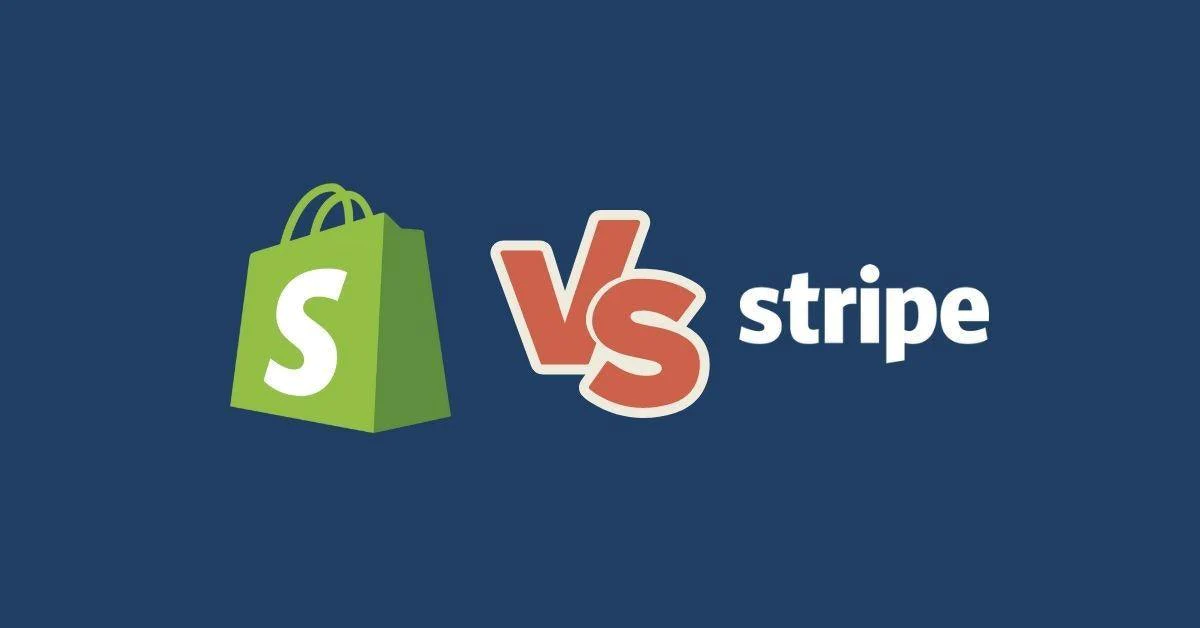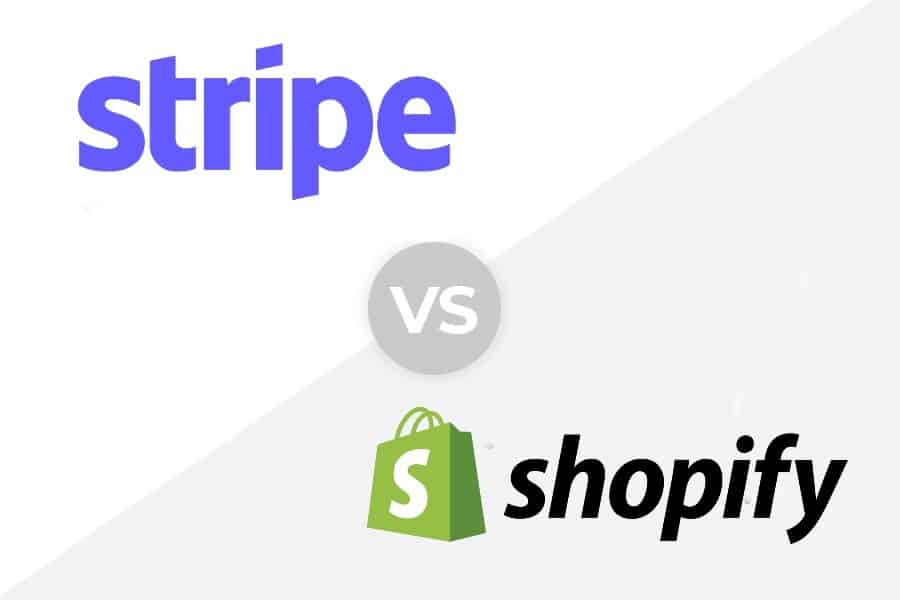Shopify Payment vs Stripe: Which is Better for Your Online Business?
Shopify Payment vs Stripe: If you run an online business, you need a reliable and secure payment provider to process transactions and accept payments from your customers. However, choosing the right payment provider can be challenging, as there are many options available in the market. Two of the most popular payment providers for online businesses are Shopify Payment and Stripe. Both offer different advantages and disadvantages for online merchants, depending on their needs and preferences.
In this blog, we will compare and contrast Shopify Payment and Stripe in terms of their pricing, features, functionality, integrations, and compatibility. We will also provide a final evaluation and recommendation based on the comparison. By the end of this blog, you will have a better understanding of which payment provider is best suited for your online business.
1. Shopify Payment vs Stripe: Pricing and transaction fees
When selecting a payment provider, it’s crucial to examine the pricing and transaction fees. Shopify Payments and Stripe both impose a percentage fee and a fixed amount per transaction. The specific charges vary based on the merchant and customer’s country and currency. In the United States, for online credit card payments, both platforms charge 2.9% plus $0.30 per transaction. Despite this similarity, there are distinctions in their fee structures, detailed further below:
Shopify Payment
It charges additional fees for using other payment providers, such as PayPal, Amazon Pay, or Stripe, on Shopify stores. These fees range from 0.5% to 2% of each transaction, depending on the Shopify plan. This means that if you use Shopify Payment as your primary payment provider, you can save money on transaction fees, especially if you use Shopify as your e-commerce platform. However, if you use other payment providers, you will have to pay extra fees to Shopify Payments, which can reduce your profitability and cash flow.
Stripe
It does not charge any additional fees for using other payment providers, giving you more flexibility and choice in selecting your payment options. You can use Stripe as a standalone payment provider or integrate it with other platforms, such as Shopify, WordPress, Squarespace, and more. You will only pay the standard transaction fees to Stripe, regardless of the platform or payment provider you use. This means that you can use Stripe as your primary payment provider, or as a secondary payment provider, without paying extra fees to anyone.

2. Shopify Payment vs Stripe: Features and functionality
Another factor to consider when choosing a payment provider is the features and functionality. Both Shopify Payment and Stripe offer a variety of payment options, such as credit cards, debit cards, digital wallets, and local payment methods, to cater to different customer preferences and markets. For example, Shopify Payment supports over 100 payment methods, including Visa, Mastercard, American Express, Apple Pay, Google Pay, Alipay, and more. Stripe also supports over 135 payment methods, including the ones mentioned above, as well as Bitcoin, ACH, SEPA, and more. However, there are some differences in the features and functionality of Shopify Payment and Stripe, as explained below:
Stripe
It provides increased customization and versatility concerning payment features and functionality, including the ability to design custom checkout pages, establish subscription plans, handle invoicing, billing, and more. Stripe boasts a highly adaptable and open API, enabling developers to craft personalized integrations and solutions tailored to diverse business requirements. Additionally, Stripe offers advanced security and fraud prevention tools, such as 3D Secure, Stripe Radar, and Stripe Sigma, enhancing protection against online threats for both your business and customers. It is an optimal choice for businesses seeking a payment provider that delivers personalized payment solutions, diverse features, and top-tier security and fraud protection.
Shopify Payment
It provides limited customization and functionality, tailored to seamlessly integrate with Shopify’s e-commerce platform and its features. Shopify Payment has a more restricted and proprietary API, constraining integrations and compatibility with other platforms and software. Additionally, it lacks support for certain payment features like recurring billing and subscription services, necessitating the use of third-party apps from the Shopify App Store. Businesses seeking a straightforward and convenient payment solution, coupled with integration into Shopify’s e-commerce platform and features, find Shopify Payment ideal.
3. Shopify Payment vs Stripe: Integrations and compatibility
A third factor to consider when choosing a payment provider is the integrations and compatibility. Both Shopify Payment and Stripe can integrate with various platforms and software, such as e-commerce platforms, website builders, point-of-sale systems, accounting software, and more, to enhance the functionality and performance of your online business. For example, Shopify Payment can integrate with Shopify’s own e-commerce platform, as well as other platforms such as WordPress, Squarespace, Wix, and more. Stripe can also integrate with these platforms, as well as other platforms such as Magento, WooCommerce, BigCommerce, and more. However, there are some differences in the integrations and compatibility of Shopify Payment and Stripe, as explained below:
Stripe
It offers more integrations and compatibility than Shopify Payment, as it has a more flexible and open API that allows developers to create custom integrations and solutions for various business needs. Stripe can integrate with almost any platform or software that supports online payments, giving you more options and flexibility in choosing your e-commerce platform, website builder, point-of-sale system, accounting software, and more. Stripe is ideal for businesses that seek a payment provider that can offer a wide range of integrations and compatibility, as well as flexibility and scalability for their online business.
Shopify Payment
It offers more integration and compatibility with Shopify’s own e-commerce platform and features, as it is the integrated payment processing service offered by Shopify. Shopify Payment can work seamlessly with Shopify’s e-commerce platform, website builder, point-of-sale system, accounting software, and more, giving you a unified and streamlined experience for your online business. Shopify Payment is ideal for businesses that seek a payment provider that can offer a high level of integration and compatibility with Shopify’s e-commerce platform and features, as well as simplicity and convenience for their online business.

Conclusion
In conclusion, Shopify Payment and Stripe are two of the most popular payment providers for online businesses, offering different advantages and disadvantages for online merchants, depending on their needs and preferences. Shopify Payment offers lower transaction fees, simplicity, and convenience for Shopify users, while Stripe offers more customization, functionality, integrations, and compatibility for online payments. The choice between Shopify Payment and Stripe depends on the needs and preferences of each online business, such as their e-commerce platform, payment options, features, and functionality.
If you need help with setting up your online payment system, or with any other aspect of your online business, you can contact OnextDigital, a leading Web Development Company. OnextDigital can help you create a custom and secure online payment system that suits your business needs and goals, as well as a stunning and functional website or mobile app that attracts and converts your customers. Contact us today and get a free quote for your online payment project.




